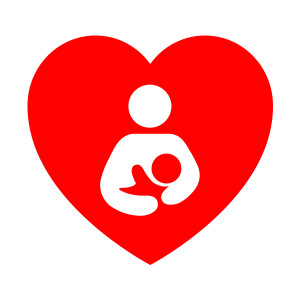By Iris Farrou
29 Apr, 2023
Breastfeeding support, Fatherhood, Lifestyle Tips, New Moms, Nutrition, Parenting, Prevention, Your baby's health
Appetite, Baby Stomach Issues, Bloating, Breastfeeding, Common Baby Ailments, Diaper Rash, Ear Discharge, Fatigue, Fever, Newborn Sleep Patterns, Newborn Stomach Issues, Oversleeping, Overtired, Rash, Sensitive Eyes, Umbilical Cord

As the parent of a newborn, you may be worried sick if they get sick; sicknesses are common in babies, especially as they are developing their immune system. There are some minor ailments that are quite common in newborns, and though they should definitely be monitored, they are not usually cause for concern or a reason to visit the doctor.
Common Problems:
- Stomach bugs that can cause vomiting and diarrhea are relatively common in babies and young children. They usually last only a couple of days, and you should make sure to keep your baby hydrated while they are experiencing those symptoms.
- Coughs, colds, and earache also often occur in babies– they normally lessen as they build their immune system. Your child may experience a runny nose, sore throat, headaches, sneezing and a raised temperature.
- Ear infections are also very common, and often follow a cold. You may notice them if your baby’s ear looks a little red, there is general irritability and restlessness, your baby has difficulty feeding, and there may even be discharge from their ear.
- Excessive crying is something that every parent expects to deal with when they have a newborn: if you’ve made sure that your baby is fed, burped, warm, and in a clean diaper your next step is probably to hold them close and try to soothe them. You will learn your baby’s cries fast, and know when they sound abnormal or excessively distressed.
More Serious Issues:
- Umbilical cord problems may occur and you will likely notice them while you are caring for your baby’s umbilical cord. If the cord actively bleeds, you should call your doctor immediately. Similarly, contact your doctor if there is red skin around the base of the cord, foul-smelling discharge from the cord, and if your baby cries when you touch the cord or the skin next to it.
- Lethargy and sleepiness can indicate a more serious condition, especially if they appear to be completely different from your baby’s usual patterns. All babies spend a lot of time sleeping, but if your baby has trouble waking up and is disinterested in eating and their usual activities, you should call your pediatrician.
- Abdominal distension is a problem that can occur due to gas or constipation. After a large feeding, most babies’ bellies will stick out, but they should be soft between feedings. If your baby’s abdomen feels swollen, and they have not had a bowel movement for one or two days–especially if they are also vomiting–get in touch with your doctor.
- Babies tend to get rashes quite often, but if you are noticing a red/brown colored rash on your baby’s head or neck that is spreading across their body you may be dealing with early signs of measles. If your baby has a fever, sore eyes that are sensitive to light, and gray spots inside the cheeks, you should immediately seek treatment for measles.
https://healthforunder5s.co.uk/sections/baby/minor-ailments-and-illnesses/
https://www.healthychildren.org/English/ages-stages/baby/pages/Common-Conditions-in-Newborns.aspx
More
By Iris Farrou
01 Nov, 2022
Breast health, Breastfeeding support, Lifestyle Tips, New Moms, Parenting, Pregnancy, Queer Health
Benefits of breastfeeding, Breastfeeding, New Moms Returning to Work, Working Moms, Working with a Newborn, Working with an Infant
Most new mothers dread the day they’ll have to return to work and leave their newborn at home, or at a daycare facility. It is undoubtedly difficult to get back into a work/home routine when you feel like you haven’t had enough time with your newborn baby–and in most cases, mothers in the Western World do not receive adequate maternal leave. The situation is made even more difficult for mothers who breastfeed their babies: a newborn requires a rigid feeding schedule, and the nursing mother cannot risk interrupting her body’s breastfeeding schedule.

Breastfeeding babies in the workplace is almost unheard of, unless you work from home or your employer provides newborn daycare right in your work building. What most nursing mothers are faced with is the option to express milk in the workplace.
Even though in 2010 Congress made an amendment to the Fair Labor Standards Act by passing the Break Time for Nursing Mothers Law, many new mothers face breastfeeding discrimination in the workplace. This primarily means that work environments do not offer appropriate accommodations for nursing mothers to express milk in a clean, sanitized, and private space. It also means, as a 2004 study has also shown, that workplaces do not provide new mothers with enough breaks during an 8-hour workday for them to adequately pump and maintain their milk production. In short, you should not be running to your car, unbuttoning your blouse as you’re running to the underground garage, adjusting the pump in the elevator and pumping for 10 minutes in your vehicle: you have waaaay more rights than that, and employers are required by law to provide you with accommodations.
Before we look into some of the ways in which employers can support new mothers, we should say that workplaces which show consistent support to new mothers and their needs tend to have a more positive work environment, and thus are more likely to be successful in their labor.
- Adequate Private Space & Appropriate Amenities: workplaces are required to provide a private space for nursing employees that is not a bathroom. This doesn’t need to be a permanent space; it can be a temporarily converted office with a lock on the door, and with the reassurance that other employees cannot see into the room. Ideally, this space should also have electrical outlets, a sink, a comfortable seat and not harsh fluorescent lighting, and a small fridge for milk storage. Some places partner with other locations that do have a dedicated lactation room to provide their employees with the necessary facilities.
- Reasonable Break Time: nursing employees should be allowed enough breaks to adequately pump at least 2-3 times during an 8-hour workday, and this should come with the understanding that the necessary time differs based on each person. There should be no negative consequences or withheld compensation for the time an employee needs for pumping during the workday.
It is of extreme importance to have a written lactation policy that outlines the employees’ rights and the employers’ responsibilities when it comes to nursing individuals. If you have concerns about this policy at your workplace, you can consult the US Department of Labor, or the United States Breastfeeding Committee.
https://www.dimaghawi.com/dimas-blog/4-important-ways-to-accommodate-nursing-mothers-in-the-workplace
https://www.womenshealth.gov/supporting-nursing-moms-work/what-law-says-about-breastfeeding-and-work/what-employers-need-know#1
More
By Iris Farrou
07 Sep, 2022
Breast health, Breastfeeding support, Health Conditions and Pregnancy, Lifestyle Tips, Mental Health, New Moms, Prevention, Procedures, Queer Health, Reproductive health, Women's Health, Young adults & teens
BRCA Gene, Breast cancer prevention, Breast cancer screening, Breast Exam, Breast Exam Buffalo NY, Breast Exams at Home, Buffalo NY, Buffalo OB-GYN, Cancer in women, Healthy Lifestyle, Self-Exam, Self-Examination, women's health tips
It is common practice at your regular OBGYN appointment for your doctor to perform a breast
exam, by using their hands and examining the overall the look of your breasts. Though this is no
substitute for a mammogram, which adult women are advised to have done yearly, it is a useful
method to see whether there are any visible or tactile abnormalities on your breasts. In fact, 40%
of breast cancers were diagnosed because women noticed something unusual about their breasts.

Is this something I can do at home?
Absolutely—and it is a good idea to perform a self-breast examination once every month. Consider it a monthly inspection you deserve, and one that at the very least helps you learn your body better. Using your eyes and hands for this examination, you can develop your own breast awareness and be able to immediately identify changes—should there be any, fingers crossed not!
What do I do?
First and foremost, it is important to choose a time of the month when your breast will not be as tender since this can cloud the results of the inspection. Ideally, during a time when you are not menstruating or ovulating. Secondly, remember you can (and probably should) ask your doctor or nurse practitioner for a demonstration on how to do this at home.
The most effective technique is to start with a visual examination of your breasts. Stand shirtless and braless in front of the mirror, with no-shadow casting light if possible, and place your hands at your sides. Look for any changes in size, shape, possible asymmetry, dimpling, or puckering. Check to see if your nipples are inverted. Then, inspect your breasts in a similar manner but after raising your hands above your head, palms pressed together forming an A shape. You can also lift your breasts and inspect whether the ridges on the bottom are symmetrical. Should you not trust your own vision, or if you have a visual impairment, it’s a good idea to ask a partner, trusted family member or friend, to help you with this.
Is this all?
The visual inspection is the first step. Next, you want to use the pads of your three middle
fingers. If you can’t sense very well with the pads of your fingers you can use your palm or the
backs of your fingers. You can do the tactile inspection in the shower or lying down (that way,
the breast tissue spreads and it’s easier to feel).
Now, take your time, don’t rush, and establish a routine for this part. If you do it clockwise every
time, for example, and in the same order, then after a few times you will be better able to judge
any changes in the pattern of your breasts. The goal here is to feel the depths of the breast using
different levels of pressure—so you can go over the whole tissue. Closest to the skin, use light
pressure. As you go try to feel a little deeper, use medium pressure. Closest to the chest and ribs,
use firmer pressure.
Remember that you are not looking for anything in particular, you are just learning the patterns
of your breasts. So, take deep breaths, take your time, remind yourself this is being done
absolutely for preventative reasons—just like flossing!
More
By Iris Farrou
30 Nov, 2021
Breastfeeding support
Benefits of breastfeeding, Best gyns in Buffalo, Best OB practices in Buffalo, Best OBGYN Groups in Buffalo, Buffalo OB-GYN, Buffalo OBGYN, Chouchani MD, WNY OB-GYN, WNY Ob-gyn doctors, WNY OBGYN, women's health
 The debate on whether breastfeeding or formula is better for a newborn baby may be alive and well, but the reality is that many mothers do choose to breastfeed. If you are thinking of breastfeeding your newborn or are already doing so, here is some advice on breast care and how to also take care of yourself in the process.
The debate on whether breastfeeding or formula is better for a newborn baby may be alive and well, but the reality is that many mothers do choose to breastfeed. If you are thinking of breastfeeding your newborn or are already doing so, here is some advice on breast care and how to also take care of yourself in the process.
Nutrition
While breastfeeding your baby proper precautions, nutrition, and attention to your body can enrich the experience of motherhood. Remember that nutrients travel through breastmilk into your baby’s body, so it is important to be aware of what you consume. Food, alcohol, and substance intake are often one of the first concerns all mothers have. You may be concerned about eating more food but consuming an extra 330 to 400 for nutrient-rich calories per day actually helps you have more energy and increases milk production.
You want to avoid alcohol, caffeine, and fish. Instead, try to focus on a protein-rich diet sourced from lean meat, vegetables, beans, fruits, vegetables, and whole grains. Eating iron as well as vitamin and calcium-dense foods ensures both you and your baby’s health. Vitamins play a key role in making sure proper nutrition thrives. If you are considering taking diet supplements or multivitamins, it is best to consult your health care provider beforehand.
If you follow a vegetarian diet, the same rules apply. Eat calcium, protein, and iron-dense foods. Try to opt for foods like plant protein, leafy greens, raisins, lentils, and whole grains. Quinoa is an excellent choice because it’s one of the only vegetarian complete proteins, meaning it has all nine essential amino acids that our bodies cannot self-produce.
Hydration
Consciously monitoring your hydration intake is as important as diet. When breast milk fluids are leaving your body, more fluid needs to go back in. Monitoring your urine color, smell and frequency are natural cues to know when to consume more healthy beverages; if something feels out of the ordinary, you need to change your fluid intake. Choose water over sugar-laden beverages and avoid caffeinated drinks. Caffeine can cause your baby to be agitated, and too much sugar can cause postpartum weight gain.
Breast Care
While breastfeeding, you also want to make sure you are allowing yourself to properly care for your nipples. An easy way to do that is by allowing some breast milk to dry on them. Breast milk has natural skin softening abilities and antibodies. If your doctor says it’s safe, take acetaminophen thirty minutes before breastfeeding to help relieve some of the pain. Start feeding your baby on the side of your breast that is less tender. Also, alternate sides and your baby’s position with each feeding. Let your nipples air-dry whenever possible and use hypoallergenic topical ointments to prevent dryness.
You can also apply cold compresses after feeding, and also provide your breasts with plenty of support. Cotton breastfeeding bras with non-elastic straps are a great option. If needed, wear a bra at night for additional support. Avoid washing your nipples with soap as it can dry them out more, or avoid using all-purpose lotions, creams, and bras with plastic lining. 
If you have symptoms that persist, such as increasing redness, puss, intense tenderness, or a fever over 101°F contact your doctor or health care provider.
More
By Iris Farrou
09 May, 2021
Breastfeeding support
Benefits of breastfeeding, Best gyns in Buffalo, Best OB practices in Buffalo, Best OBGYN Groups in Buffalo, Buffalo OB-GYN, Buffalo OBGYN, Chouchani MD, WNY OB-GYN, WNY Ob-gyn doctors, WNY OBGYN

If you are an expecting or new mother, you are probably finding yourself wondering about the benefits of breastfeeding, the required—or suggested—length of time for breastfeeding your baby, as well as about storage options and solutions. In this amalgamation of information, one thing is for sure: the decision on whether to breastfeed or not, and for how long, is to be made between you and your baby.
According to the American Academy of Pediatrics, exclusive breastfeeding should take place for six months and continue after solid foods are introduced at least until one year of age. The World Health Organization extends this even further, recommending breastfeeding until two years old or even longer. As far as the beginning of breastfeeding is concerned, both AAP and WHO suggest as early as one hour after birth.
Benefits of breastfeeding
- Important Nutrition and Antibodies: In the first days after birth, you will produce a thick and yellowish fluid high in protein and low in sugar, full of beneficial compounds, colostrum. It is the ideal milk for a newborn’s digestive tract and as the baby grows, your breasts produce more and more milk. Additionally, it contains high amounts of immunoglobulin and other antibodies which help your baby fight off viruses and bacteria. Formula does not provide antibody protection.
- Reducing Disease Risk and Promoting Healthy Weight: Because of the existence of antibodies, breast milk helps prevent most common diseases that affect babies, such as ear and respiratory infections, colds, gut infections and intestinal tissue damage, bowel diseases, and even SIDS, diabetes and childhood leukemia. Since breastmilk promotes the development of different gut bacteria, it also helps prevent obesity and weight gain. A bonus to that is that babies self-regulate their milk intake when breastfeeding, so they are more likely to develop healthy eating habits.
Keep in mind that there are benefits to breastfeeding for mothers as well, linked to lower chances of contracting diseases, helping your uterus contract, as well as burning more calories and helping you lose weight after pregnancy. Probably the most interesting of all is that breastfeeding can tremendously help new mothers with post-partum depression.
Storing and Handling
Before handling breast milk, make sure you thoroughly wash and sanitize your hands. If using a pump to express milk, ensure it is clean and replace any tubing that may seem moldy or suspiciously unclean.
Freshly expressed breast milk should be stored in either breast milk storage bags, or food-grade containers with tight fitting lids. Avoid BPA-containing bottles. Store the milk at room temperature for four hours or less or keep it in the refrigerator for up to four days. Though you can keep it in the freezer indefinitely, it is suggested that you store it for up to six months for best use but 12 months is also acceptable.
More

More often than not, lactation is associated with pregnancy, breastfeeding, and the mother’s body preparing to care for the newborn baby. Though many times the mother’s body will produce milk on its own, sometimes the mother needs to receive additional help to produce enough milk for breastfeeding. Additionally, it is also possible to receive extended hormonal treatment for induced lactation. A small percentage of women can also begin lactating without any association to pregnancy—a condition known as galactorrhea where excessive milk is produced.
Natural Lactation
The mother’s body prepares to lactate in the final months of pregnancy, and it does so through three main hormones: estrogen, progesterone and placental lactogen. Especially at the time of delivery, the hormone prolactin levels increase to such an extent so as to initiate milk production, while at the same time the levels of estrogen and progesterone decrease. According to the CDC, the American Association of Pediatrics suggests that infants should be continuously breastfed during the first six months of their lives, while other foods are gradually introduced. It is also recommended that breastfeeding continues at intervals until about two years of age, but most infants are neither exclusively breastfed nor do they continue to breastfeed for as long as recommended.
Induced Lactation
Many mothers need to replicate the body’s process of milk production to either enhance the lactation process, or to recreate it because they are coming into motherhood without pregnancy. This is most common with mothers who wish to breastfeed their adopted baby. To achieve induced lactation hormone therapy is the first required step: supplemental estrogen or progesterone may be prescribed to mimic pregnancy, and it can last for months. A few months before the expected breastfeeding date, hormone therapy will cease and you will begin the process of pumping your breasts to encourage the release of prolactin. This is a lengthy process, and the pumping gradually increases in time and intensity. It is likely that in the case of induced lactation time may not be on your side, in which case other medications may be prescribed. However, what remains integral for the milk supply necessary for breastfeeding is the process of pumping.
Galactorrhea
A number of women begin lactating without any association to pregnancy, a condition known as galactorrhea. The most common symptom is one or both breasts producing excessive milk, while other symptoms may include random leaking from the nipples, enlargement of breast tissue, irregular periods, low sex drive, acne and headaches. In some cases the cause of this may be hard to find, but the general rule is that it happens due to hormone imbalances, or as a side effect of medications. Since the most common reason for milk production is increased levels of the hormone prolactin, galactorrhea may happen due to medications, underlying medical conditions, a tumor, or overstimulation of the nipples. As with any condition with various causes, how it can be treated depends on what is causing it and it is up to your healthcare provider to conduct the appropriate tests to pinpoint the cause.
More

Most people will tell you that breastfeeding does not only provide the newborn baby with necessary nutrients, but that it is also a great way for a mother to bond with her newborn—as well as an important way for the whole family to come together. What is not common knowledge, however, is that breast milk contains antibodies that can also be used to improve your overall health—and you don’t need to be a baby for that to happen! In fact, in many places around the world such as the Guangdong Province in China, breast milk is considered a hot commodity. The main reason for this is that it contains antibodies that combat diseases without causing inflammation.
Ear Infections
One of the ways in which breast milk can help treat ear infections is through the baby’s constant motion of sucking, as this relieves the pressure in the ear cavity. Additionally, many mothers report that a few drops of it in the baby’s ear help ease ear infections. This is due to the antibodies that can be found in breast milk. Ergo, it can also be used as a natural remedy for adult ear infections. Three or four drops at the entrance of the ear canal should be enough for this remedy to work.
Eye Infections
The most common eye infection, pinkeye, is treated with probiotic-laden, non-acidic liquids. Breast milk has been proven to be the most effective of those, tested scientifically and not only because mothers have been using it for a long time as a treatment. A couple of drops should be used in addition to the clear eye drops to treat infectious conjunctivitis. Be sure to consult with your doctor before using breast milk as a treatment of any sort.
Breast Milk as Ointment
The antibodies breast milk contains, more specifically IgA, can help prevent germs from growing on skin injuries. Some drops of breast milk can be used to disinfect an area that has a burning or itching cut. Similarly, it can be used as ointment for baby eczema; baby skin can dry easily and cause eczema which can be soothed when applying breast milk on the suffering area.
Breast Milk as Facial Cleanser
Controversial as it may sound, breast milk is a cost-effective solution to treat acne or skin disorders because of the lauric acid it contains. To use it as an acne solution, make sure to dilute it by first applying cold water on your face or acne-infected area; proceed to apply a few drops of breast milk and allow it to air dry. Wipe clean with a wet towel.
As you would do with any suggested home remedies, make sure that you consult your doctor and that you exercise your best judgement according to what your body needs best.
More
 The number of moms choosing to breastfeed has risen roughly 12% since 2000. About 80% to 85% of babies breastfed for a portion of time, with about 35% breastfed for more than a year. The American Academy of Pediatrics (AAP) and the American College of Obstetricians and Gynecologists both strongly recommend breastfeeding.
The number of moms choosing to breastfeed has risen roughly 12% since 2000. About 80% to 85% of babies breastfed for a portion of time, with about 35% breastfed for more than a year. The American Academy of Pediatrics (AAP) and the American College of Obstetricians and Gynecologists both strongly recommend breastfeeding.
Benefits to the baby include infant nutrition, gastrointestinal function, and a better well-being. Additionally, breastfed infants have reduced risk of infectious disease, sudden infant death syndrome, otitis media, and respiratory infections, as compared to formula-fed babies. Breastmilk contains the ideal mix of nutrition for your baby blending nutrients, fat and protein. In addition, a woman’s body will adapt to a growing baby and will adjust the correct proportions of ingredients. Breastfeeding can also reduce the risk of childhood obesity.
While the benefits to the baby are well-known and frequently discussed in society, the benefits to the mothers are usually less widespread. However, breastfeeding can be particularly good for moms as well. Breastfeeding has been linked to lowering a woman’s risk of many diseases, including type 2 diabetes, hypertension, myocardial infraction, coronary artery disease, and certain types of cancer.
Women who breastfed for 12 months or more had a 15% decreased risk of type 2 diabetes and 12% reduced risk of hypertension. Myocardial infraction and coronary heart disease risk can be reduced by 23% for women who breastfed for two or more years. Additionally breastfeeding can reduce the risk of breast, ovarian, and endometrial cancers by 20% to 37%. Studies have shown risks of cancer reduced by 10% to 15% for every 12 months of breastfeeding.
In addition to lowering the risk of disease and cancer, breastfeeding can decrease postpartum bleeding and increase the uterine involution. While a healthy diet with plenty of water, fruits, vegetables, lean protein, and whole grains is recommended, breastfeeding can also help women lose baby weight.
Exclusive breastfeeding is recommended during the first six months of life, with the introduction of complementary foods during months six to 12. Keep in mind, birth practices can help promote successful breastfeeding. Experts recommend that skin-to-skin mother and baby contact should be initiated at birth and women should begin breastfeeding within an hour of birth. Newborns should not be given outside food or drink unless medically indicated. Women that breastfeed should be encouraged to avoid using pacifiers or artificial nipples.
Sources:
https://www.mdedge.com/obgyn/article/190488/obstetrics/maternal-health-benefits-breastfeeding/page/0/1?channel=262
https://www.aap.org/en-us/advocacy-and-policy/aap-health-initiatives/Breastfeeding/Pages/Benefits-of-Breastfeeding.aspx
Benefits of Breastfeeding
More
 They say that the breast is best, but that doesn’t mean it’s the easiest way to feed your newborn. First time moms are often not prepared for, or aware of, many of the common issues that can be experienced when both you and your baby are learning to work together for the first time. To help ease any breastfeeding nerves and prepare you to overcome any challenges, familiarize yourself with these common scenarios and troubleshooting best practices.
They say that the breast is best, but that doesn’t mean it’s the easiest way to feed your newborn. First time moms are often not prepared for, or aware of, many of the common issues that can be experienced when both you and your baby are learning to work together for the first time. To help ease any breastfeeding nerves and prepare you to overcome any challenges, familiarize yourself with these common scenarios and troubleshooting best practices.
Leaking Breasts
This issue can be as embarrassing as it is frustrating, but it’s not necessarily a bad thing. Leaking helps prevent engorgement (large, heavy, painful breasts—more on that later). Leaking can be unpredictable but often goes away on its own once you are breastfeeding regularly. To mitigate leaking breasts at inopportune times, when you start to sense oncoming milk letdown, apply firm pressure to your breasts by crossing your arms across your chest as if to hug yourself. Also, consider wearing clothes that easily camouflage any uncontrollable wetness.
Engorgement
Frequently occurring in the first several days after a baby is born, in exacerbated cases, engorgement may cause feelings of hard, swollen, throbbing, lumpy, breasts that may even cause you to run a fever. Engorgement may occur if you are not able to nurse your baby frequently enough or empty your breasts sufficiently during each feeding. Complicating matters further, engorgement may make it difficult for your baby to latch onto the breast. To minimize your chances of engorgement, nurse within two hours of your baby being born, and then nurse regularly after that (between eight and 12 times a day after the first 24 hours).
Baby Won’t Latch
Sensing your baby will not or cannot latch to your breast can be particularly stressful but try not to let your anxiety inhibit your ability to work through the process together. There are a variety of reasons why baby can’t latch at first that range from a difficult birth to the shape of your nipples (naturally flat nipples make it difficult for baby to grasp). Depending on the cause, you may have to adjust your troubleshooting technique. In general, however, keep your baby skin-to-skin as much as possible to get him comfortable being close to your chest. Coax baby to feed by expressing a drop of milk on your nipple and encouraging him or her to lick and nuzzle. Also, focus on the best positioning for you both. Support baby by leaning back and allowing his entire body to be supported against you. You can also cradle your baby in a football hold if that is more comfortable.
Baby Isn’t Eating Enough
New moms often fear their baby isn’t getting enough milk. Know that the vast majority of women produce enough milk to satiate their babies and keep them healthy. To determine if your baby is getting enough, make sure he or she is swallowing and is satisfied when complete. When baby first latches, he will suck rapidly to stimulate milk flow, and then move into a deep, slow, pulling rhythm. Look and feel for the sensation of his jaw moving as he swallows. When your breastfeeding session is complete, your baby should seem peaceful and content. A baby that is lethargic or cries for more food may not have gotten enough milk.
If you experience any of these conditions or issues while breastfeeding, speak to your OBGYN or your baby’s pediatrician. Breastfeeding should offer a necessary emotional bonding opportunity for you and your baby and should not be a cause of stress or discomfort.
More
 If you’re about to be a first time mom, you have many decisions to make, from nursery color schemes, to who you want with you in the delivery room, to the all important baby name. As you prepare for your baby to arrive, take some time to educate yourself on the benefits of breastfeeding. August is breastfeeding awareness month, which means now is the perfect time to learn how this parenting choice can benefit both you and your infant.
If you’re about to be a first time mom, you have many decisions to make, from nursery color schemes, to who you want with you in the delivery room, to the all important baby name. As you prepare for your baby to arrive, take some time to educate yourself on the benefits of breastfeeding. August is breastfeeding awareness month, which means now is the perfect time to learn how this parenting choice can benefit both you and your infant.
Benefits for Baby
- Optimal nutrition – Research shows that breast milk offers the highest quality nutritional benefits for your infant. Your breast milk will naturally contain all of the vitamins and nutrients your baby needs in the first six months of development.
- Immune-boosting benefits – Breast milk naturally contains important disease-fighting substances that will help to build your baby’s immune system. Studies have shown that your baby will be at a reduced risk of stomach viruses, lower respiratory illnesses, ear infections, and meningitis if breastfed at least during the first six months. This protection comes from a substance called secretory immunoglobulin A (IgA), which is present in the first milk your body produces for your baby.
- Reduced risk of allergies – Infants who are breastfed are at a reduced risk of developing allergies. In particular, babies who are fed a formula based on cow’s milk or soy tend to have more allergic reactions than those who are breastfed.
- Long-term protection – Studies show that breastfeeding may reduce your child’s risk of developing certain diseases later in life, including type 1 and type 2 diabetes, high cholesterol, inflammatory bowel disease, Crohn’s disease, and ulcerative colitis.
- Like mother, like child – A woman’s breast milk is specifically tailored to meet the needs of her child. Our bodies produce IgA in response to specific pathogens that we are exposed to throughout our lives, and those lgAs will be passed on to your baby during breastfeeding, offering optimal protection from those pathogens to which you have been exposed.
- Better brain food – A study of more than 17,000 infants found that children who had been breastfed showed enhanced cognitive development, as determined by their IQ scores and other intelligence tests, over those who were fed formula.
- Reduced risk of obesity – Breastfeeding may help your baby to develop healthy eating habits from infancy that will protect him/her from developing an unhealthy weight later in life. Breastfed babies learn to eat until their hunger is satisfied, and tend to carry this healthy habit into adolescence. In addition, compared to formula, breast milk contains less insulin, which stimulates the creation of fat.
Benefits for Mom
- Mental health – Breastfeeding can reduce a new mother’s stress level and her risk of postpartum depression. The National Institutes of Health reviewed more than 9,000 study abstracts and concluded that women who did not breastfeed or who stopped breastfeeding early were at a higher risk of postpartum depression. Breastfeeding also releases the hormone oxytocin, which stimulates feelings of relaxation.
- Emotional bonding – The emotional bonding between mom and baby that occurs during breastfeeding is an important part of both the baby’s emotional development, and your connection with one another.
- Long-term protection – Numerous studies have found that the longer a woman breastfeeds, the lower her risk for developing breast and ovarian cancer.
- Assists in weight loss – While you’re pregnant, your body automatically layers on extra fatty tissue so you’ll have enough fat stores to begin and support breastfeeding. It’s true that breastfeeding can help you lose your pregnancy weight naturally without compromising either your health or your baby’s (considering you are eating healthy). Your body will burn calories to make breast milk.
If you have questions about breastfeeding, or if you are still deciding if it is the right choice for you and your baby, contact your OBGYN today to discuss your options. The doctors at Chouchani, Sayegh and Bagnarello MD are dedicated to helping you and your baby achieve optimal health.
More









 They say that the breast is best, but that doesn’t mean it’s the easiest way to feed your newborn. First time moms are often not prepared for, or aware of, many of the common issues that can be experienced when both you and your baby are learning to work together for the first time. To help ease any
They say that the breast is best, but that doesn’t mean it’s the easiest way to feed your newborn. First time moms are often not prepared for, or aware of, many of the common issues that can be experienced when both you and your baby are learning to work together for the first time. To help ease any 